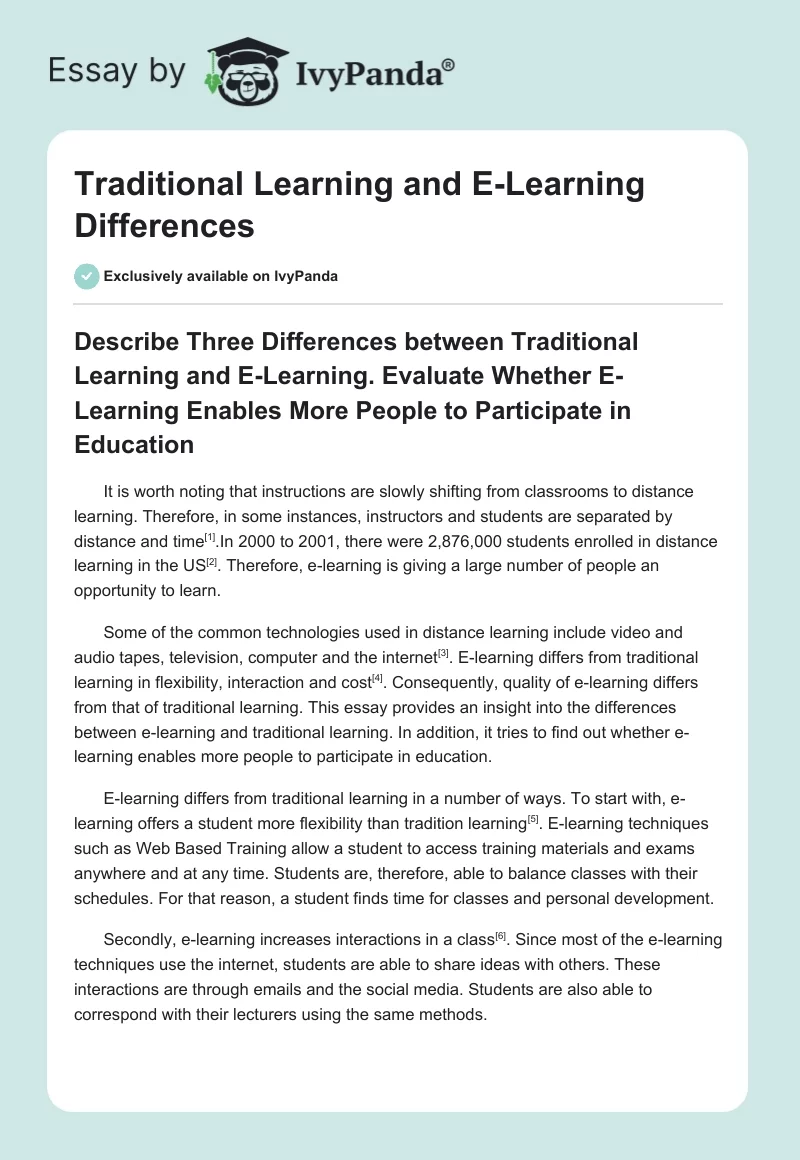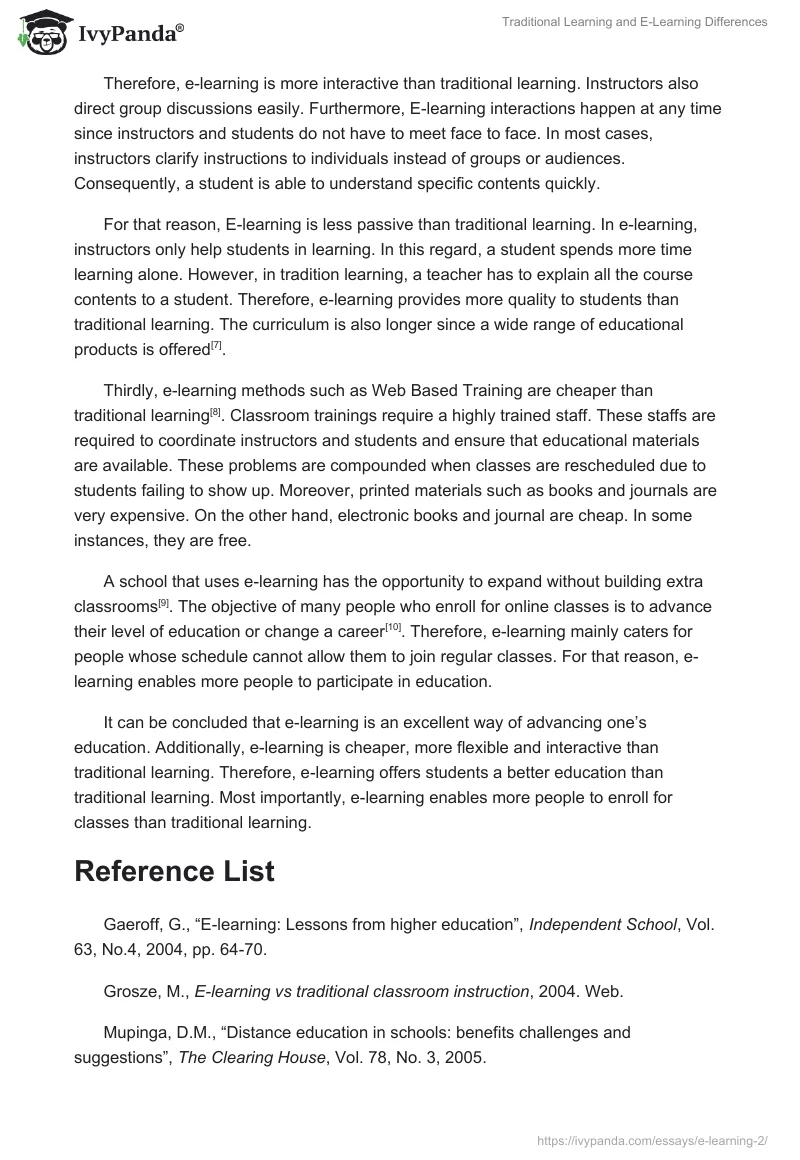It is worth noting that instructions are slowly shifting from classrooms to distance learning. Therefore, in some instances, instructors and students are separated by distance and time. In 2000 to 2001, there were 2,876,000 students enrolled in distance learning in the US. Therefore, e-learning is giving a large number of people an opportunity to learn.
Some of the common technologies used in distance learning include video and audio tapes, television, computer and the internet. E-learning differs from traditional learning in flexibility, interaction and cost. Consequently, quality of e-learning differs from that of traditional learning. This essay provides an insight into the differences between e-learning and traditional learning. In addition, it tries to find out whether e-learning enables more people to participate in education.
E-learning differs from traditional learning in a number of ways. To start with, e-learning offers a student more flexibility than tradition learning. E-learning techniques such as Web Based Training allow a student to access training materials and exams anywhere and at any time. Students are, therefore, able to balance classes with their schedules. For that reason, a student finds time for classes and personal development.
Secondly, e-learning increases interactions in a class. Since most of the e-learning techniques use the internet, students are able to share ideas with others. These interactions are through emails and the social media. Students are also able to correspond with their lecturers using the same methods.
Therefore, e-learning is more interactive than traditional learning. Instructors also direct group discussions easily. Furthermore, E-learning interactions happen at any time since instructors and students do not have to meet face to face. In most cases, instructors clarify instructions to individuals instead of groups or audiences. Consequently, a student is able to understand specific contents quickly.
For that reason, E-learning is less passive than traditional learning. In e-learning, instructors only help students in learning. In this regard, a student spends more time learning alone. However, in tradition learning, a teacher has to explain all the course contents to a student. Therefore, e-learning provides more quality to students than traditional learning. The curriculum is also longer since a wide range of educational products is offered.
Thirdly, e-learning methods such as Web Based Training are cheaper than traditional learning. Classroom trainings require a highly trained staff. These staffs are required to coordinate instructors and students and ensure that educational materials are available. These problems are compounded when classes are rescheduled due to students failing to show up. Moreover, printed materials such as books and journals are very expensive. On the other hand, electronic books and journal are cheap. In some instances, they are free.
A school that uses e-learning has the opportunity to expand without building extra classrooms. The objective of many people who enroll for online classes is to advance their level of education or change a career. Therefore, e-learning mainly caters for people whose schedule cannot allow them to join regular classes. For that reason, e-learning enables more people to participate in education.
It can be concluded that e-learning is an excellent way of advancing one’s education. Additionally, e-learning is cheaper, more flexible and interactive than traditional learning. Therefore, e-learning offers students a better education than traditional learning. Most importantly, e-learning enables more people to enroll for classes than traditional learning.
Reference List
Gaeroff, G., “E-learning: Lessons from higher education”, Independent School, Vol. 63, No.4, 2004, pp. 64-70.
Grosze, M., E-learning vs traditional classroom instruction, 2004. Web.
Mupinga, D.M., “Distance education in schools: benefits challenges and suggestions”, The Clearing House, Vol. 78, No. 3, 2005.


